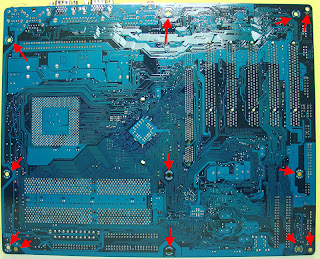Hard disk failure is possibly the worst thing that can happen to your computer and it often occurs without giving any warning signs.
Test Your Hard Drive for Impending Problems
hard diskYou may however run certain tests on your computer beforehand to get an idea about the current condition of your hard disk. This should in turn help you decide whether a replacement drive is necessary or not.
Step 1: Check your hard disk for errors
All recent versions of Windows include a utility called Chkdsk.exe that can check your hard disk for any bad sectors.
You may either run Chkdsk from the command line (see details) or launch Windows Explorer, right click the drive that you wish to examine and choose Properties. Switch to the Tools tab and click the “Check Now” button under Error checking. Select “Scan for and attempt recovery of bad sectors” to perform a thorough disk check.
Step 2: Understand the sounds of your disk
Do you sometimes hear strange sounds coming out of the CPU box? Well, if the hard drive is making those sounds, it could be an alarming situation and your best bet would be that you turn off the computer before any further damage is done to the disk.
But how do you distinguish between sounds coming from a hard disk with noise that’s made by the fans or the power supply? Here's a useful page where you can listen to recorded sounds of various hard drives that have lead to a crash. If your disk is making a similar sound, get a replacement quickly.
Step 3: Catch errors before they happen
Disk Checkup is a free hard disk monitoring utility that displays tons of diagnostic data about your disk. While the level of detail it provides may easily confuse even tech-savvy users, just ignore the numbers and keep the utility running in the background.
It monitors your disk’s temperature, read and write error rate, etc. and will alert you when the values of any of these parameters approach dangerous levels. These may be signs of an impending disk failure. Disk Checkup is free for personal use.
Step 4: Thoroughly test your Hard Disk
SeaTools is free diagnostic tool that can completely test your hard drive regardless of the OS installed on it. The tool is provided by Seagate but it works with non-Seagate disk drives as well.
To get started, you need to download the ISO image of SeaTools for DOS and create a bootable CD. Now boot the computer with the CD in the drive, accept the license agreement and run a long test (the full scan). If any defects are found, a list will be offered at the end or after aborting the disk scan.
Other computer vendors /disk manufactures including Samsung, Hitachi, Toshiba (Fujitsu), Western Digital, Lenovo, Dell, etc. too offer diagnostic tools that work only with their own brand of hard drives. If you are having frequent computer problems (like system hangs or fails to boot up), you may run these tools to confirm if the problems are hard drive related.
Important: While these tools can help you diagnose your hard drive's health, they are still no good substitute for regular backups.














